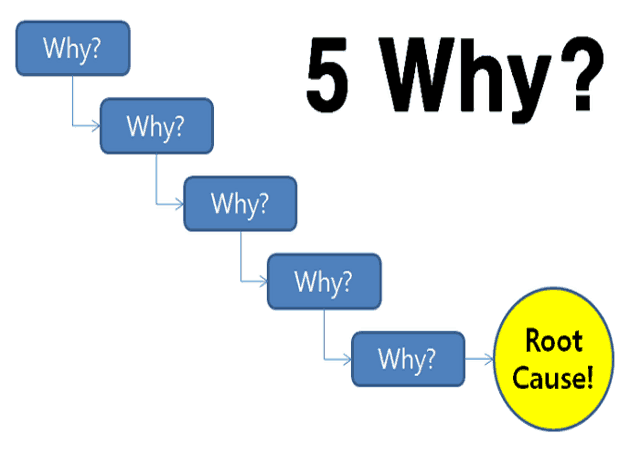The 5 Whys Technique
The 5 Whys Technique
Dr.Abdulrahman ALJAMOUSS
The 5 Whys Technique was developed by Toyota Motor Corporation. Taiichi Ohno, one of the technique founders, said in his book Toyota Production System: Beyond Large-Scale Production, “By saying why 5 times, the essence of the issue and its solution become evident.”
The 5 Whys technique was popularized in the 1930s by Sakichi Toyoda, a Japanese industrialist, and creator of Toyota Industries. He said by stating, “By stating why 5 times, the essence of the problem and its solution become evident.”
It evolved further in the 1970s, and Toyota currently employs it to address problems.

Problem: One of the monuments in Washington D.C. is deteriorating.
Why #1 – Why is the monument deteriorating?
- Because harsh chemicals are frequently used to clean the monument.
Why #2 – Why are harsh chemicals needed?
- To clean off the large number of bird droppings on the monument.
Why #3 – Why are there a large number of bird droppings on the monument?
- Because the large population of spiders in and around the monument are a food source to the local birds
Why #4 – Why is there a large population of spiders in and around the monument?
- Because vast swarms of insects, on which the spiders feed, are drawn to the monument at dusk.
Why #5 – Why are swarms of insects drawn to the monument at dusk?
- Because the lighting of the monument in the evening attracts the local insects.
Solution: Change how the monument is illuminated in the evening to prevent attraction of swarming insects.
How to Perform 5 Whys & 5 Hows
Form the Team
A cross-functional team should perform the 5 Why & 5 How to exercise. You cannot do it alone. The team should include members familiar with the issue and members from other departments. Each team member brings their unique viewpoint of the problem and asks questions they may not have otherwise come out.
Define the Issue
The first step in any root-cause analysis is to define the issue. Make a straightforward problem statement. The team should determine the scope of the issue. Defining the problem broadly may extend the time it takes to find solutions that do not fit the company’s culture and are thus unlikely to be implemented.
It saves effort and makes solving the problem easier when you define the problem up front.
Ask Why
Next, the facilitator should ask “Why” the problem occurred. The responses must be backed by facts, not by emotion. The reactions should focus on process or system errors.
The team leader should then ask the team if they corrected the identified causes and whether the failure mode or problem still occurs. If the answer to the first why is yes, proceed to the second “Why.” If the answer to the second “why” is still yes, ask the third “Why.” Keep asking for the fourth and the fifth time until the answer is no.
The First “Why?”
The team has been asked why this issue has occurred. Answers should be carefully considered and based on actual facts rather than a hunch about what happened. Many alternative reasons and deductive reasoning are avoided.
There could be only one clear explanation for the issue or several valid solutions. As a result, the facilitator should write short phrases in response to the problem statement.
Repeat the “Why” Four More Times
“Why?” should be asked four more times for each answer.
Stop When the Root Cause is Discovered
When “why?” no longer yields any valuable responses, the root cause is discovered. At this point, you will have a root cause of the problem.
Despite the name, it is not necessary to ask all 5 “whys?” or additional “whys?” Stop when responses are no longer helpful.
Determine and Implement Corrective Actions
Following the identification of the root cause(s), you should make a list of approved corrective activities to eradicate the issue’s root cause. You can utilize the 5 Hows method to figure out the answer. How, for example, may this problem be avoided? Continue to ask “How” until you find a solution that eliminates the root cause.
Evaluate Your Progress
Keep an eye on how well the remedy eliminates or diminishes the problem’s impact. It’s possible that you’ll need to alter or replace the solution. If this happens, repeat the 5 Whys procedure to ensure you’ve identified the correct root cause.
You should arrange regular status meetings with the team to keep everyone up to date on the status of the issues. You can evaluate the efficacy of your efforts after you’ve completed the recommended actions.
